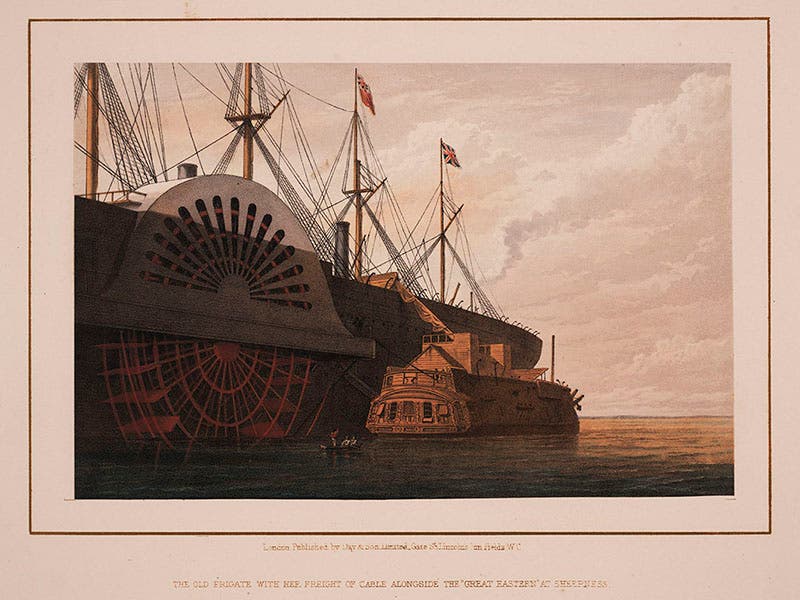Scientist of the Day - William Howard Russell
William Howard Russell, an Irish reporter who worked for The Times of London, was born Mar. 28, 1820. Russell was a pioneer war correspondent who made his name in covering the Crimean War (Florence Nightingale supposedly signed up after reading Russell's dispatches from the front, describing the plight of the wounded). But in the realm of science and technology, Russell is noted for embarking on a monster ship, the Great Eastern, in 1865, as it departed Ireland with a bellyful of gutta-percha cable, which its crew intended to lay across the North Atlantic ocean floor all the way to Newfoundland. In addition to his pen, Russell brought along an artist, Robert Dudley, to sketch memorable scenes.
The expedition of 1865 was not the successful one, as the cable parted 2/3 of the way across and could not be retrieved. But Russell published his diary in The Times, and then collaborated with Dudley on an illustrated book, which was published in 1866 as The Atlantic Telegraph, with 25 lithographs. As fate would have it, about the time the book appeared, the Great Eastern concluded a second trip across the Atlantic, and not only was the 1866 cable laid intact, but the 1865 cable was recovered and completed as well. The book rode the coat-tails of the successful cables to become a publishing success, in spite of the fact that it was the account of a failure. And there is no denying the success of the lithographs, which are large, colorful, and filled with interesting subjects, like gargantuan ships, enormous vats of cable, and complicated cable-laying equipment. We have this book in the “deluxe edition” in our History of Science Collection, from which the above images were drawn. You can see all 25 plates, and the paintings on which they were based, at the Atlantic Cable website.
We displayed one of Russell’s plates in our 2013 exhibition, Crayon and Stone: Science Embraces the Lithograph, but it is not yet available online.
Dr. William B. Ashworth, Jr., Consultant for the History of Science, Linda Hall Library and Associate Professor, Department of History, University of Missouri-Kansas City. Comments or corrections are welcome; please direct to ashworthw@umkc.edu.












